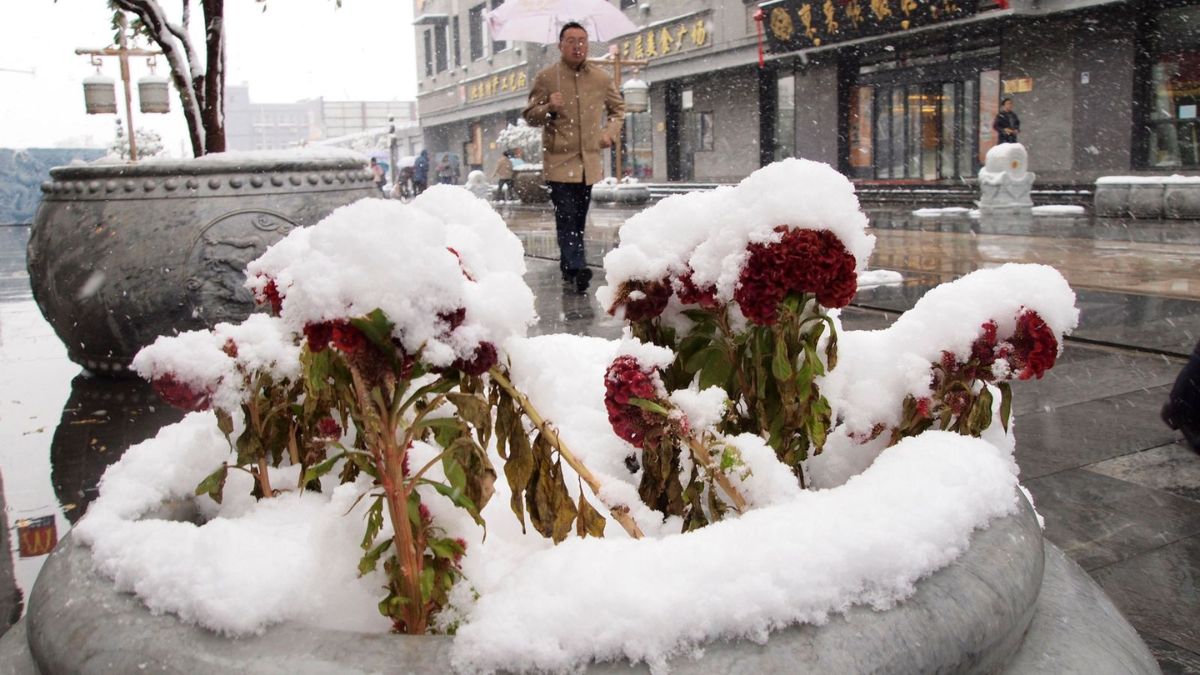A local tourist attraction in southwestern China touted as a winter wonderland, has found itself buried in deep trouble after selfie-hungry visitors discovered the promised “snow” beneath their feet was nothing more than cotton wool and foamy water.
Chengdu Snow Village—a newly opened destination in suburban Chengdu, Sichuan province—had attracted tourists over the Lunar New Year holiday with glossy promotional photos featuring thick layers of snow draped over log cabin roofs.
However, it didn’t take long for the truth to emerge, sparking outrage among visitors and igniting a flurry of online chatter. So, what happened? What was the park’s response? Here’s a closer look at the latest controversy.
The snow joke
The Chengdu Snow Village promised visitors from warmer regions of China a charming winter escape, complete with picturesque snowy landscapes. But when an unusually warm January left Sichuan province without snowfall, the attraction resorted to an unexpected solution.
“In order to create a ‘snowy’ atmosphere, the tourist village purchased cotton for the snow… but it did not achieve the expected effect, leaving a very bad impression on tourists who came to visit,” the park admitted in a statement.
Disappointed visitors flooded social media with photos showing wisps of cotton scattered across a dry, brownfield or tangled in bushes. The roof of one cabin was even covered in what appeared to be bedding material, with staple marks easily spotted.
“I feel cheated. I think my intelligence has been insulted!” one frustrated tourist said on social media. “A snow village without snow,” said one user.
Another visitor commented, “The description on its tickets is true, but the snow is fake,” while someone else added, “I wanted to see snow, but you showed me cotton. I am speechless.”
‘Weather did not side with us’
Amid the backlash, the tourist site scrambled to remove all traces of the cotton “snow” and issued a public apology. The management stated that visitors would be offered refunds for their disappointing experience.
Due to the “big negative impact” caused by the controversy, the attraction has now been temporarily shut down. An employee at the site confirmed that there is no set date for reopening.
A staff member attempted to explain the decision, saying, “Following the precedents of previous years, we typically have snow in winter. So we set up this spot for a photo shoot in advance to wait for the snow to come. We were waiting for the arrival of snow. Unfortunately, the weather did not side with us,” the worker told Global Times.
China’s weather bureau has warned that the country is experiencing longer and more intense heatwaves, along with unpredictable heavy rainfall, as a result of climate change.
Last year was the warmest year on record in China, according to China’s Met Department. The average temperature in Chengdu during January is typically anywhere between 37 and 50 degrees Fahrenheit (3 to 10 degrees Celsius).
Keeping it ‘unreal’
This isn’t the first time a tourist attraction in China has been caught misleading visitors with fake features. Over the years, several locations have drawn criticism for not quite delivering on their promises.
Just last year, it was revealed that the breathtaking Yuntai Mountain Waterfall in Henan province wasn’t entirely natural. Hidden artificial pipes were found to be boosting their flow to maintain their “spectacular” appearance during the dry season.
In another case, an amusement park in Zibo City, Shandong province, sparked outrage when visitors realised that its zebras were actually donkeys painted with black and white stripes. The bizarre stunt was eerily similar to an earlier controversy at Taizhou Zoo in Jiangsu province, where two so-called pandas turned out to be chow-chow dogs dyed to resemble the beloved black-and-white bears. The zoo initially claimed they were “ panda dogs ” but later admitted the deception.
More recently, another zoo in Taizhou faced backlash when a video surfaced of a chow-chow puppy dyed with tiger-like stripes. The zoo defended its actions, claiming it was done purely for entertainment and to attract visitors.
With input from agencies
)